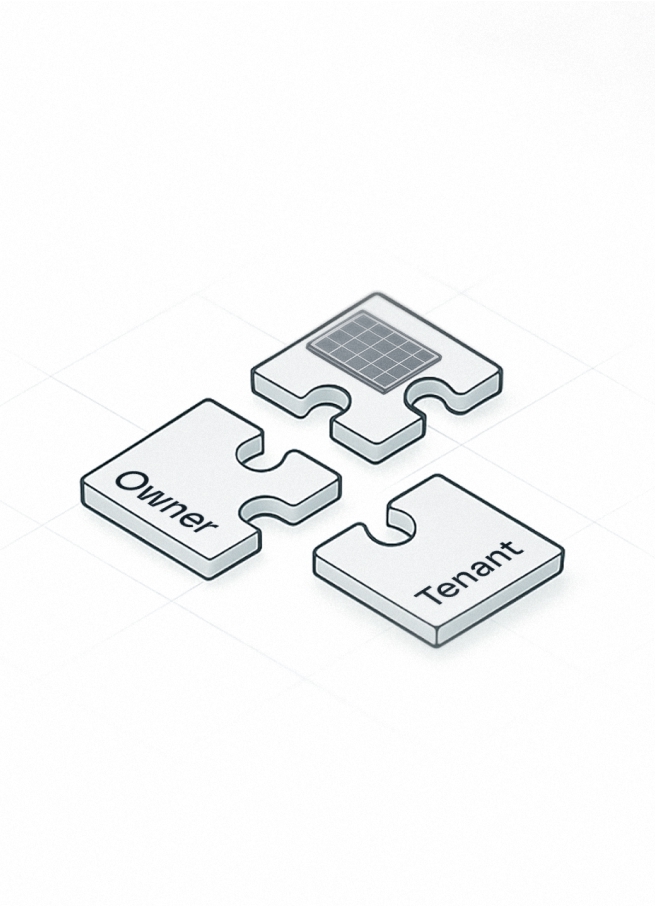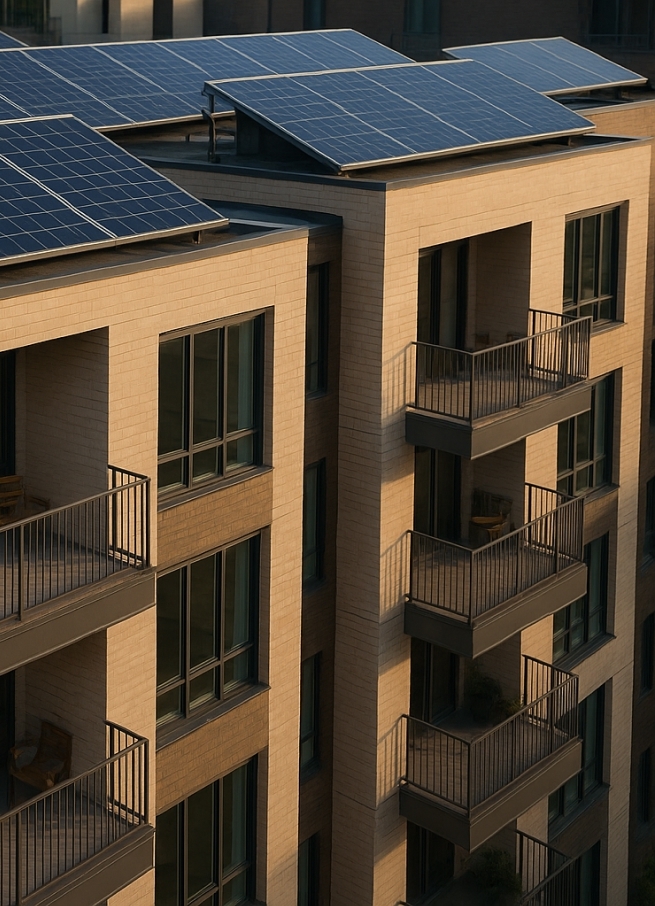Why Solar is a Wise Investment for Your Rental Properties

Solar power installations continue to become more accessible for residential homes. Current technologies are making solar panels more affordable for the average household. Other benefits, such as state tax incentives and lower environmental impact, are pushing homeowners to go solar. But the benefits of solar power remain underutilized when it comes to multifamily rental properties. Most rental properties face logistical hurdles in mapping out a clear ROI, managing solar usage, billing residents, and distributing benefits. If these hurdles are surpassed, however, the multifamily housing industry can expect a win-win situation for everyone: property owners, managers, residents, and especially, the environment. We’re here to share how you can overcome these obstacles and successfully invest in solar for your rental properties.
Financial Benefits of Solar for Rental Properties
Utility Bill Savings
With the constant utility rate hikes and California having some of the highest electricity rates in the US, solar panels provide a more affordable energy source. Installing a solar system allows you to use less power from the grid, generating electricity onsite at a low levelized rate.
Rental properties experience utility bill savings in a few ways:
- Solar power offsets the electricity needs of the property’s common areas.
- Excess solar power that isn’t immediately used is exported to the grid in exchange for a credit from the utility company.
- Virtual Net Metering allows you to share the electricity and the savings with residents, which, with the support of Ivy’s Virtual Grid software, provides the opportunity to generate a new NOI (net operating income) by collecting solar electricity payments from residents.
While installing the solar panel system requires a bit more of an investment than relying solely upon the grid, the utility bill savings in the long term easily offset the initial investment.
Attract and Retain More Residents
Climate change and carbon footprint awareness have surpassed the status of simply being trends. Our society is now making a conscious effort to reduce fossil fuel consumption and opting for cleaner, green energy sources. Consumers are even willing to pay a higher premium for earth-friendly alternatives. GreenPrint’s Business of Sustainability Index survey found that over 75% of Americans will pay more for sustainable products. Having an eco-friendly rental property with onsite renewable energy adds an in-demand amenity that you can market and even appropriately increase rent to reflect the value of.
Properties that provide renters the opportunity to reduce their carbon footprint, all while saving money on utility bills, are sure to attract and retain more residents. Furthermore, rental properties with higher resident retention rates have lower vacancy costs and resident turnover costs.
Property Value Increase
A rental property with a steady supply of income, attractive to renters, and having a low vacancy or turnover rate is guaranteed to have a high property value. On top of that, the energy usage of rental properties is critical in attracting ESG-minded (Environmental, Social, and Governance) investors and potential buyers. High value is often given to rental properties that run on a clean and efficient power supply and have a low reliance on the grid.
Tax Savings and Tax Credits
Rental property owners switching to solar can save on taxes in the following ways:
Depreciation Expense
A solar system for your rental property falls under the category of tangible property that is eligible for tax deduction under the Modified Accelerated Cost Recovery System (MACRS). This allows for qualifying solar equipment costs to be claimed as a tax deduction through depreciation over five years.
Federal Solar Tax Credit
To further entice rental property owners to shift to green energy, the federal government established a solar incentive program called the Investment Tax Credit (ITC). This federal solar tax credit lets rental property owners claim a tax credit of 30% of the solar system and installation investment. Additionally, this credit can be rolled over to future years if the taxpayer lacks the necessary tax liability to take the full credit, thus letting you maximize your solar tax credit.
Complications of Solar Power in Multifamily Rental Properties
We’ve covered some of the key financial benefits that make solar a wise investment. But, you may be wondering if those really outweigh the work you have to take on with managing solar. Let’s address how to overcome the most common obstacles to making this investment for your rental property.
Problem: Virtual Net Metering is complex, but flat discounts don’t result in ROI. Solution: Ivy’s Virtual Grid has you covered.
Trying to account for the actual usage of solar power for each renter is like navigating through a maze. It's a real brain-teaser to calculate on-site costs and grid costs accurately. So, distributing utility savings fairly based on actual usage? Let's just say it's a near-impossible mission without the Virtual Grid’s proprietary algorithm and smart grid logic. The software uses utility-grade monitoring, down to 15-minute increments, to accurately track resident energy usage and solar energy generation.
Problem: Property managers don’t want the headache of billing for solar electricity. Solution: Virtual Grid comes with the full support of Ivy’s customer service team.
Your property managers already have a mountain of paperwork and plenty on their plates. Managing to bill for solar costs and grid costs, and all the additional customer service that goes with it, is like carrying a massive weight on their shoulders. It's a monumental task that drains their time and energy. However, when you implement Virtual Grid’s solar billing software, you don’t just get the software. You get the experienced Ivy Energy team to handle resident onboarding, questions, and solar bills. Best of all, the solar bills integrate right into your existing rent ledger system, so your property managers have minimal additional work to collect this new NOI.
Problem: Residents want clarity about their solar electricity bill that you don’t have. Solution: Ivy’s solar bill is user-friendly and easy to understand.
It's a sad truth that both property owners and residents can end up feeling less than thrilled about onsite solar. Property owners struggle to see the benefits and can't even estimate their return on investment. It's no wonder they hesitate to embrace clean energy. And as for the residents, they can't truly appreciate the advantages of a solar-powered property because they can't compare their solar costs against their utility costs without solar. That’s exactly why Ivy’s solar bill provides a transparent breakdown of the solar benefits, grid costs, and the cost with solar versus the cost without solar. This helps residents gain clarity on their savings and even optimize their electricity usage to maximize their solar benefits.
Ivy Energy Provides Easy Management and Clear ROI
Ivy’s Virtual Grid simplifies solar power management for multifamily rental properties. It eliminates the above complications so owners and residents can enjoy the benefits of going solar. Considering solar power for your rental properties? Get in touch with Ivy Energy for a free demo of Virtual Grid, and discover how you can maximize the benefits of solar power for your investments!
.png)




